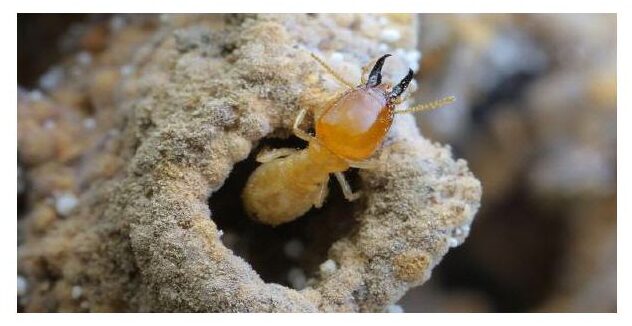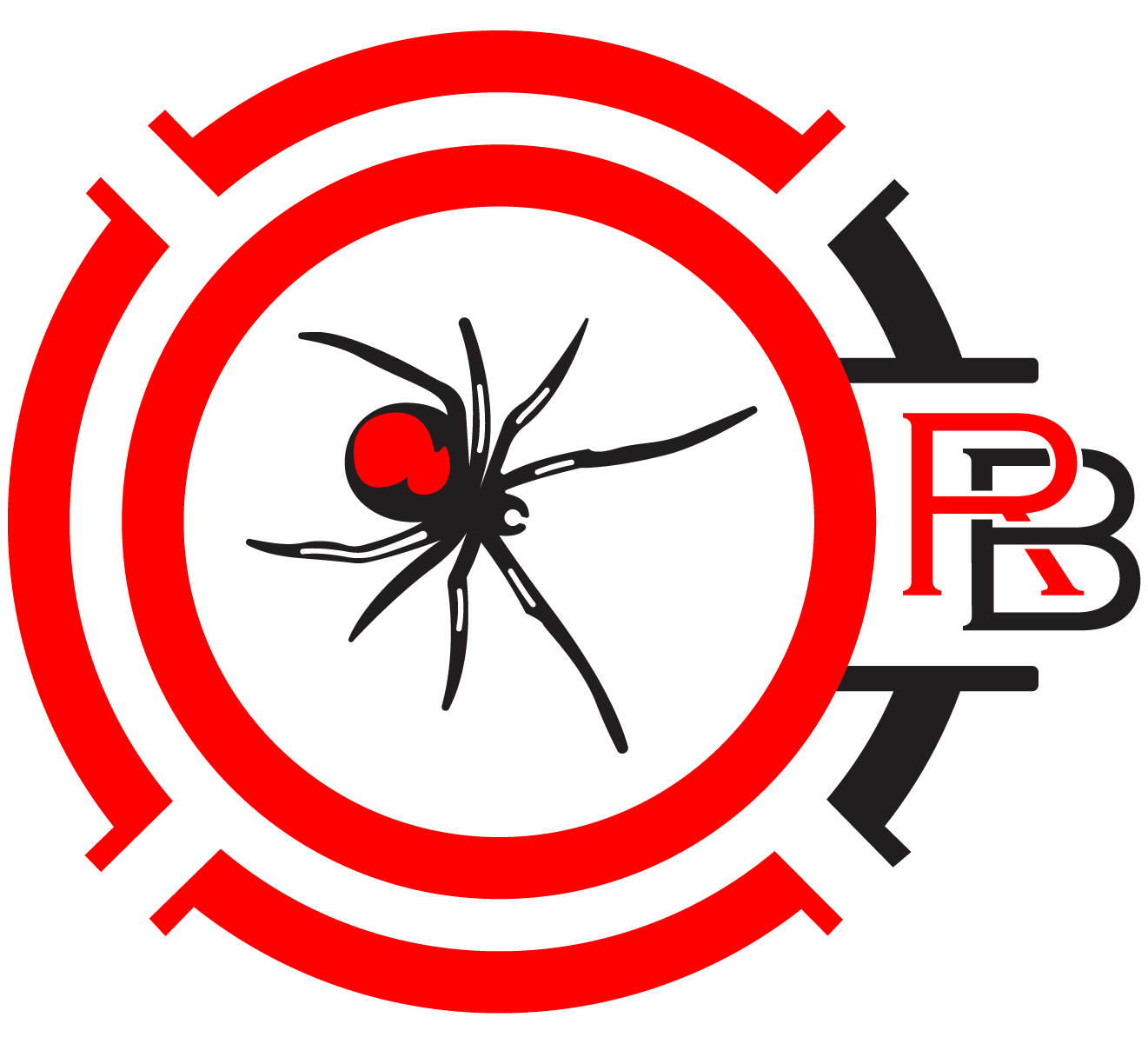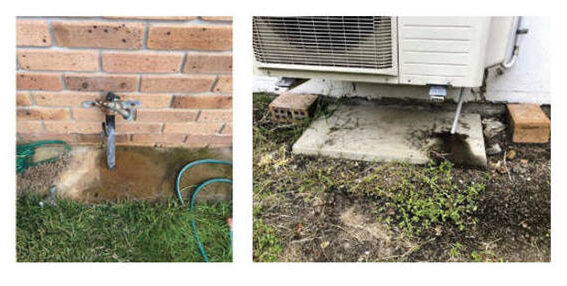Call 1800-TERM-HELP - 1800 837 643 - Your Local Termite Professionals!
Unit 2/840 King Georges Road, South Hurstville, NSW 2221
Welcome to Termite Help - Termite Control and Termite Treatment Carramar
People ask us
Are Termites a Problem in Sydney, Blue Mountains, Wollongong, and Central Coast?
Yes, termites are a significant problem in Sydney, Blue Mountains, Wollongong and the Central Coast of New South Wales.
These areas’ temperate climates, high humidity, and abundance of wood in residential structures and natural environments provide ideal conditions for termite infestations.
Homeowners in these regions must stay vigilant, as termite damage can result in extensive structural damage and costly repairs.
When faced with a possible termite infestation, you must consult a qualified pest controller! However, choosing the right person for the job can be a challenging task, especially with the mixed reputation in the pest control industry today.
Many ‘here today, gone tomorrow’ type Pest Control companies will cut their pricing by using unqualified technicians and hazardous chemicals that’s harmful to people and the environment. A qualified pest controller must have obtained proper qualifications and complies with all related government regulations.
Contact Termite Help today for a professional inspection and long-term protection plan on 1800 837 643 or 0419 600 110
Did you know that termites destroy more homes in Australia than fire, flood and storms combined?
Read more and explore the types of termites commonly found in these areas, their behaviors, and the necessary actions for inspection and treatments.
Termites
Australia has around 300 species of termites but only around 20 are of any economic significance. Different areas experience problems with different species and behaviour can vary with geography. The identification, study and management of termites are a complex integration of skills, experience and local knowledge. If you think you have termites on your property it is essential you seek expert Termite help.
Types of Termites Found in Sydney, Blue Mountains, and Central Coast
Several species of termites are commonly encountered in these regions, each presenting unique challenges to homeowners and pest control professionals. The most prevalent types include:
1. Subterranean Termites (Coptotermes spp.)
- Habitat: Subterranean termites are the most destructive species in Australia. They build large underground nests and travel through mud tubes to forage for wood and cellulose-based materials.
- Behavior: These termites thrive in moisture-rich environments, often nesting near or under buildings, in gardens, or in decaying wood.
- Damage: They consume wooden structures from the inside out, often going undetected until significant damage is evident.
2. Drywood Termites (Cryptotermes spp.)
- Habitat: Unlike subterranean termites, drywood termites do not require contact with soil. They infest dry wood, such as furniture, framing, and decorative timber.
- Behavior: They form smaller colonies and may take years to cause noticeable damage, but their presence can severely affect timber integrity.
- Damage: These termites expel tiny, pellet-like droppings called frass, a key indicator of their infestation.
3. Dampwood Termites (Kalotermes spp.)
- Habitat: Dampwood termites prefer moisture-laden wood, such as decaying tree stumps, wet timber, or wood exposed to water damage.
- Behavior: They are less common in homes but can be found in areas with high moisture levels.
- Damage: Though less destructive than subterranean termites, they weaken wood by consuming its softer, moisture-rich parts.
Signs of Termite Infestations
Detecting termites early can save homeowners from extensive and costly repairs. Common indicators include:
- Mud Tubes: Subterranean termites construct mud tubes along walls, foundations, or pipes for protection and moisture while traveling.
- Hollow-Sounding Wood: Tapping infested wood produces a hollow sound due to internal tunneling.
- Frass: Drywood termites expel tiny wood-colored pellets around infested areas.
- Swarmers: Winged termites (alates) emerge during swarming seasons, usually after rain. Discarded wings near windowsills or doorways can indicate nearby activity.
- Cracks and Bubbles in Paint: These can result from termites tunneling close to the surface.
Why Termites Are a Persistent Problem in These Regions
1. Climatic Conditions
The temperate climate of Sydney, Blue Mountains, Wollongong and the Central Coast provides an ideal environment for termites. The combination of warm temperatures and moderate to high humidity creates conditions conducive to termite survival and reproduction.
2. Abundant Food Sources
Homes and natural environments in these regions often contain abundant wood and cellulose-based materials. Gardens, mulch, timber decks, and weathered wooden structures serve as easy access points for termites.
3. Urban and Rural Interactions
The mixture of urban development and natural bushland areas makes the Blue Mountains and Central Coast particularly vulnerable. Termites can easily migrate between wooded areas and residential properties.
Termite Help – Inspection Specialists Carramar
Inspection and Treatment Methods
Effective termite management requires a combination of regular inspections, preventive measures, and, if necessary, professional treatment.
1. Inspection
Regular inspections are the cornerstone of effective termite management. These inspections involve:
- Professional Inspections: Licensed pest control professionals use specialized tools like moisture meters, thermal imaging cameras, and borescopes to detect termite activity. Annual inspections are recommended, though high-risk properties may require more frequent checks.
- DIY Checks: Homeowners can inspect areas prone to infestation, such as basements, crawl spaces, and wooden structures. However, DIY inspections may miss subtle signs of infestation.
2. Preventive Measures
To reduce the risk of termite infestations, homeowners can adopt the following preventive actions:
- Reduce Moisture: Ensure proper drainage around the property and repair leaking pipes, gutters, and downspouts,Fix Leaking Taps, and Divert all over flows.
- Maintain Distance from Soil: Keep wooden elements, such as decks and fences, elevated and away from soil contact.
- Seal Cracks and Gaps: Seal entry points around plumbing, wiring, and foundation cracks.
- Minimize Wood-to-Earth Contact: Store firewood and timber off the ground and away from the house.
- Use Treated Timber: Build with termite-resistant or treated wood where possible.
3. Treatment Options
When infestations are detected, several treatment methods can be employed:
- Chemical Barriers: Liquid termiticides are applied around a property’s perimeter to create a chemical barrier. This prevents termites from entering or leaving the structure.
- Baiting Systems: Termite bait stations are placed around the property. These contain a slow-acting toxin that termites carry back to their colony, eventually eliminating it.
- Foam and Dust Treatments: These are used in localized infestations to kill termites within walls, ceilings, or other enclosed spaces.
- Heat and Cold Treatments: Non-chemical methods, such as heat or cold treatments, are sometimes used to eradicate termites in small, confined areas.
- Fumigation: Drywood termite infestations may require whole-structure fumigation. This method is invasive but highly effective for severe infestations.
1. Sydney
Urban areas in Sydney face challenges due to high-density housing and older buildings with untreated timber. Regular inspections and maintenance are essential to prevent termites from exploiting structural vulnerabilities.
2. Blue Mountains
The natural bushland of the Blue Mountains makes homes more susceptible to termite incursions. Properties near forests must adopt stringent preventive measures, such as clearing debris and maintaining proper drainage.
3. Central Coast and Wollongong
The Central Coast and Wollongong proximity to water and high humidity levels make it a hotspot for termite activity.
Coastal properties often experience Subterranean Termites (Coptotermes spp.) and dampwood termite infestations, necessitating moisture control and regular inspections.
Professional Assistance
While preventive measures and DIY inspections are valuable, professional pest control services from Termite Help are critical for comprehensive termite management. Licensed professionals offer:
- Expertise in identifying and classifying termite species.
- Access to advanced detection tools and effective treatments.
- Adherence to safety standards for chemical applications.
- Inspections typically range from $200 to $500, depending on property size.
- Treatments can vary from $1,000 to $5,000 or more, depending on the severity of infestation and the chosen method.
Benefits:
- Protects property value and prevents costly structural repairs.
- Provides peace of mind and long-term security against termite damage.
So yes our Experience and Conclusion is
Termites are indeed a pervasive problem in Sydney, Blue Mountains, Wollongong and the Central Coast.

Their ability to cause significant structural damage makes them a formidable threat to homeowners in these regions.
By understanding the types of termites present, recognizing signs of infestation, and employing effective inspection and treatment methods, homeowners can safeguard their properties.
Whether through preventive measures or professional interventions, proactive termite management is essential in combating these persistent pests.
Is Termite Damage Covered by Insurance in Australia?
In most cases, termite damage is not covered by standard home insurance policies in Australia. Insurers typically classify termite infestations as a preventable maintenance issue rather than an unforeseen event. As such, homeowners are expected to take proactive steps to inspect and protect their properties against termites. Failure to do so can leave property owners financially responsible for repairing the damage caused by these destructive pests.
Cost of Common Repairs
The cost of repairing termite damage varies depending on the severity and extent of the infestation. Typical repair expenses include:
- Structural Repairs: Repairing timber frames, support beams, or other structural components can cost anywhere from $5,000 to $50,000 or more, depending on the damage’s scope and the property’s size.
- Floor and Wall Repairs: Replacing damaged floorboards or walls can cost between $2,000 and $10,000.
- Furniture and Fixture Replacements: Infestations in furniture or cabinetry may require replacements, adding $500 to $5,000 to repair bills.
Safety of Termite Damage
Termite damage can significantly compromise a property’s structural integrity, posing safety risks to occupants. Key safety concerns include:
- Structural Weakness: Infested beams, joists, and supports can collapse, leading to severe property damage or injury.
- Hidden Dangers: Termites often cause internal damage, which remains hidden until significant deterioration occurs. This can make floors, walls, and ceilings unsafe over time.
Conclusion
Given the high cost and safety risks associated with termite damage, preventive measures such as regular inspections and professional treatments are crucial. While insurance doesn’t typically cover termite damage, investing in proactive maintenance can save homeowners thousands of dollars and protect against potential hazards. Homeowners should review their insurance policies carefully and consider additional pest coverage if available.
How Do Professionals Get Rid of Termites?
Professional termite eradication requires a thorough understanding of termite behavior, advanced tools, and effective treatments to ensure complete removal and long-term prevention. At Termite Help, we have been treating termites for over 30 years, offering trusted and reliable solutions tailored to our clients’ needs.
Step 1: Inspection
The first step in professional termite treatment is a detailed inspection. Experts from Termite Help use state-of-the-art technology, such as thermal imaging cameras, moisture meters, and borescopes, to locate termite activity. This comprehensive assessment identifies the type of termite, the extent of the infestation, and any structural vulnerabilities.
Step 2: Treatment Options
Once the inspection is complete, Termite Help employs the most effective treatments to eradicate the infestation. These may include:
- Chemical Barriers: We apply liquid termiticides around the perimeter of the property to create a protective barrier. This prevents termites from entering or exiting the area.
- Baiting Systems: Termite Help uses strategically placed bait stations containing slow-acting toxins. Termites consume the bait and share it with their colony, leading to its eventual collapse.
- Foam and Dust Treatments: For infestations within walls or hard-to-reach areas, we use foam and dust insecticides that penetrate deep into termite galleries, eliminating the pests at their source.
- Heat or Cold Treatments: In some cases, we use non-chemical methods such as heat or cold treatments to exterminate termites without damaging the property.
Step 3: Prevention
After treatment, Termite Help provides ongoing monitoring and preventive strategies, such as regular inspections and advice on reducing moisture and wood-to-soil contact, to protect your property from future infestations.
With over three decades of experience, Termite Help is your trusted partner in safeguarding your home from termite damage. Contact us today for a professional assessment and effective treatment plan.
Termite Treatments Carramar
Comprehensive Termite Treatment Plan
At Termite Help, we specialize in providing effective termite treatment solutions for properties in Sydney, the Blue Mountains, Wollongong, and the Central Coast. With over 30 years of experience, we understand the unique challenges each region faces due to its climate, geography, and proximity to bushland or coastal areas. Here is our step-by-step termite treatment plan:
Step 1: Inspection and Assessment
The first step in combating termites is conducting a thorough inspection of the property. Our trained professionals use advanced tools such as thermal imaging cameras, moisture meters, and borescopes to locate termite activity and identify the type of termite present. In high-risk areas like Sydney and Wollongong, where urban environments meet natural termite habitats, this step is crucial.
Time Required: Inspections typically take 1-2 hours, depending on the size and complexity of the property.
Step 2: Customized Treatment Plan
Once the infestation is assessed, we develop a tailored treatment plan specific to the property’s needs and the severity of the infestation. Our treatment methods include:
- Chemical Barriers: Applying liquid termiticides around the property’s perimeter to prevent further termite entry.
- Baiting Systems: Installing bait stations in strategic locations to eliminate termite colonies over time.
- Foam and Dust Treatments: Injecting specialized products into termite galleries within walls, ceilings, or structural timber.
- Localized Treatments: Using heat or cold methods for targeted infestations in specific areas.
Step 3: Post-Treatment Monitoring and Prevention
After the treatment, our team provides regular follow-up inspections and advice to prevent future infestations. For properties in the Blue Mountains and Central Coast, this includes moisture management, maintaining proper drainage, and reducing wood-to-soil contact. We recommend annual inspections for all regions to ensure long-term protection.
Time Required: Follow-ups and preventive measures are ongoing, with inspections taking 1-2 hours annually.
Conclusion
Termite treatment requires a strategic approach tailored to your location and infestation severity. At Termite Help, we provide comprehensive solutions for Sydney, the Blue Mountains, Wollongong, and the Central Coast.
Where’s the cavalry?
Contact Termite Help today for a professional inspection and long-term protection plan on 1800 837 643 or 0419 600 110



